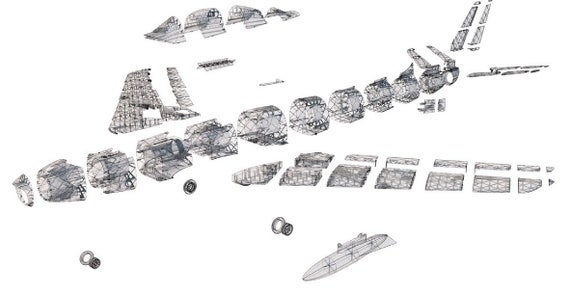

Especially in case of cheap Chinese printers this could push your printer to completely different level.
3DLABPRINT DOLLAR UPGRADE
Consider upgrading with E3D Prusa i3 Upgrade Kit , you get 100% working Nozzle/Hotend/Extruder combination. Your hotend/extruder is not able to print thin walls. The last chance – if you use Prusa i3 clone printer and nothing works. This option causes some minor blobs to airfoil, but helps with oozing the filament out of the nozzle and so on… (Simplif圓D picture) If you have tried everything with no success, you can try one last solution:Ĭhange the bottom stock setting to the optimize start point setting. Reducing the retraction speed to 15-20 mm/s or placing the parts on heatbed differently might help fighting the underextrusion after retraction as well. Sometimes a drop of vegetable oil applied on filament prior to print could reduce friction especially in bowden extruders. Another option is decreasing the print speed, increasing the movement speed to reduce oozing and adjusting the temperature.
3DLABPRINT DOLLAR SOFTWARE
“Extra restart distance” value (if your slicing software has this feature) adds some extra amount of filament after retraction. In case of under-extrusion at layer start point (after retraction), please check your hot end for issues. Set retraction for all spots, not just for outer perimeters! In case of nozzle clogs due to molten filament in heatbreak, decrease the retraction value. For bowden extruders use values around 4-6 mm. Good starting point is 0.8 and if you find some oozing during the non print movement try increasing this value. For non-bowden (direct drive) extruders RETRACTION values of 0.7-1.5 usually works fine. The Retraction value is very dependent on your printer and filament quality. Don’t forget to calibrate you extruder E steps and add measured filament diameter into slicing software. Allways ensure your hot end is in good shape, gives steady flow and right amount of filament. Value 1.02 usualy works fine, but sometimes we may need at least 1.15. The multiplier value can vary depending on your printer and filament diameter.
3DLABPRINT DOLLAR PDF
Refer to optimal weights for each part in our PDF user guides to find optimal multiplier value. However it increases the resulting weight of printed parts. Increasing extrusion multiplier results in stronger parts with better layer bonding. This is very IMPORTANT for successful prints. Please experiment with extrusion multiplier. Extrusion multiplier – amount of filament Please see the VIDEO guide for more information about this. For a first few milimeters of the parts or exposed parts you can use separate process with two or more perimeters shell. Turn on thin wall detection for our slic3r version Thunderbolt. Most of the parts are printed with only one perimeter/shell thickness (0.4 mm nozzle gives the best results). Please experiment with temperature (for PLA in range 210-260) for proper layer bonding… Usually, for thin wall printing, we need higher temperatures than recommended by filament manufacturers compared to printing standard items. Included Gcodes are 100% compatible with Prusa i3 original printers (it should work with most i3 family and compatible printers as well) Please check our Facebook or Forum for recent information. Older Slic3r based or other slicers are not supported and the functionality is not guaranteed. Satisfactory results are achieved with Cura, please check the Help section for more info about slicing in specific slicers. Since version 2.4.0 we also support Prusa Slicer and continuously add preconfigured 3mf files to the downloads. We’re including Simplif圓D factory files with all settings preconfigured for Direct drive printers. Our STL files are designed for printing in special mode, which some slicers may detect as faulty. This is intentional result of extensive development to achieve desired strength to weight ratio. We’re using some specific features in our STL files resulting in possible errors in some CAD / slicing software. Please see the PDF/VIDEO user guide prior to printing our models. Our Forum contains many useful informations as well. We’re using the same technology for all of our models, so once you dial in your printer for any of the test files, you should be able to print all of them. You’ll find usually the largest part of some of our planes. If you want to test your printer before buying the plane, you can find the test files on our Thingiverse profile.


 0 kommentar(er)
0 kommentar(er)
